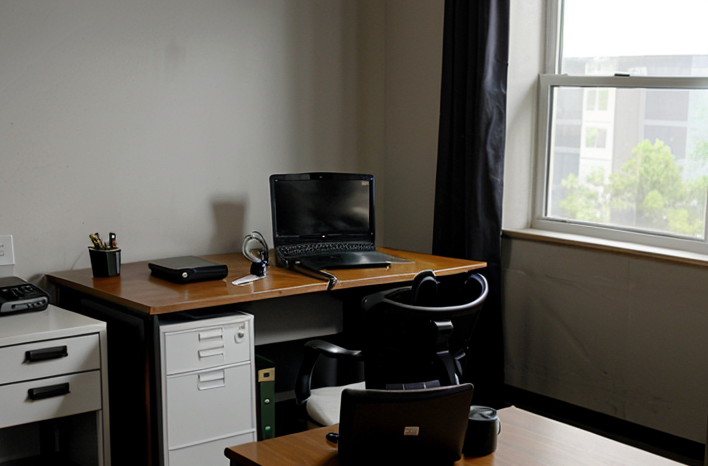Can HR Be Remote? Exploring the Future of Human Resources in a Digital World
The traditional role of HR was simple. It managed people and policies. Over time, HR did more than paperwork and employee records. It became a strategic partner in business. One major turning point was the pandemic. It forced many companies to adopt remote work.
Are You a Good Fit for This Job?
These changes happen swiftly. Organizations had to adapt fast to survive. Technological advancements propelled this shift. Companies use tools like video calls and chat apps. In many ways, it gave people freedom. Employees could work from home, balancing life and job.
Demographics also played a part. Younger workers prefer flexible arrangements. The rise of gig work made employers rethink HR. It is now crucial to engage a blended workforce.
- Companies found benefits in this shift.
- Lower costs on office spaces.
- Access to a larger talent pool across regions.
- Improvements in job satisfaction.
Yet, this came at a cost. Leaders missed face-to-face interactions. There are gaps in communication. Teams may struggle to connect without physical presence. So, how does HR navigate these changes? Technology can help bridge the gaps.
As organizations adjust to new work dynamics, understanding the implications of technology on HR roles is vital. Discover how advancements in AI may impact the future of HR jobs by reading more about this transformative trend.
the influence of AI on HR positions.
Tools for collaboration are necessary. HR leaders must prioritize building relationships. Moreover, some organizations thrived online. They created strong digital cultures. The future HR will need to blend traditional strategies with modern practices.
It is a balancing act, and it is not easy. But companies can create effective remote teams. All of this means a rethinking of HR’s role. The sector must evolve to truly support the remote workforce.
The Benefits of Remote HR Operations

Remote HR has come into its own. There are many reasons for this shift. These benefits can change workplace dynamics. Companies have proven this model works.
Flexibility
Flexibility tops the list. Employees can work from anywhere. This lets teams adapt to their personal lives. For example, Buffer allows staff to set their own hours. This has boosted morale and led to increased productivity!
Cost Savings
- Reduced overhead: Companies save on office space and supplies.
- Lower salaries: Remote hiring can lead to savings in salaries by recruiting talent from lower cost areas.
- No commuting costs: Employees save money on travel and time!
Before remote work, many firms spent huge amounts. Starbucks is one good example. They shifted much of their HR operations online. Now, they cut costs significantly.
Access to a Broader Talent Pool
Finding the best people is easier now. Companies can hire from anywhere. For instance, GitLab has team members in 67 countries! This wide reach has helped them find skilled professionals.
With a diverse team, they enjoy varied perspectives. Diversity fosters innovation. It leads to creative solutions too. This expands the company’s ability to adapt!
Moreover, companies no longer limit themselves to local markets. Employers can seek specific skills without geographical restrictions. This is a significant advantage.
Increased Productivity
The work-from-home model shows remarkable results. Employees save time and energy. They spend less time in commute. This lets them focus more.
Work From Anywhere Opportunities:
Additionally, companies like Zapier report higher productivity. Their remote team enjoys a good work-life balance. This balance translates into performance. Someone should take a note on that!
Better Work-Life Balance
Remote HR allows personal time management. Employees can structure their day better. They can attend family needs and work interests. It enhances happiness and decreases burnout.
When satisfied, employees stay longer. Retention rates climb. This adds to the company culture and improves overall health.
Navigating Challenges: The Downsides of Remote HR
Remote HR can meet troubles. Employees may feel isolated. The distance can cause a lack of engagement. Teams might struggle to connect. Communication can break down.
Experts highlight the risks. They say remote work can lead to *misunderstandings* and gaps. When people don’t see each other, issues can grow. New staff may feel lost and sad. This can harm morale and productivity.
- Employee Engagement: It’s all about feeling valued. Remote work can make this hard. An employee might think their efforts go unnoticed.
- Team Cohesion: Working from home can damage team bonds. Trust is key in any team dynamic. Without face-to-face meetings, trust takes longer to build.
- Company Culture: Culture becomes fragile. Every office has its vibe. When teams go remote, people miss the everyday interactions. This can lead to less shared identity.
Effective communication is essential. In a remote setup, unclear messages may arise. Teams must be clear about their goals. Daily check-ins can help, but they can feel robotic. This raises the question: how to keep it personal?
Businesses often face compliance issues, too. Labor laws vary by region. It’s critical to understand the rules. Experts stress the need for training. Missing details may lead to hefty fines.
There is a way to manage these challenges. Clear guidelines build a strong foundation. Leaders must prioritize open dialogue. Regular feedback can work wonders. Make virtual hangouts fun and engaging.
In addition, building a positive culture is key. Use fun activities to connect the team. Whether it’s quizzes, or workshops, keep it lively. However, remember to tailor activities to everyone’s interests.
Solving these challenges takes effort. Implement effective tools for collaboration. Invest in tech for real-time communication. Encourage constant learning. Doing this will help your organization thrive.
Best Practices for Implementing Remote HR

Remote HR must embrace clear communication. Use tools that connect everyone. Video calls are essential. They help in maintaining a personal touch. Include platforms like Zoom or Microsoft Teams.
Next, utilize project management tools. They keep tasks organized. Apps such as Trello or Asana allow tracking progress easily. Encourage a culture of trust. Trust team members to do their jobs. Avoid micromanaging. A strong foundation builds loyalty.
- Set clear goals and expectations.
- Regular check-ins help teams stay connected.
- Promote team bonding activities.
- Be flexible with hours.
Also, focus on employee wellbeing. Virtual wellness programs can boost morale. Offer resources for mental health. This support shows care. Training new employees can be tricky. Use onboarding software for smoother processes. Examples include BambooHR and Gusto. They simplify hiring and training.
Tech support should be readily available. Problems arise, and quick help is vital. Lastly, gather feedback often. Surveys are helpful to understand needs. Analyze results to improve the workplace. In a digital world, adaptability proves key. Remote HR is here to stay and grow.
Employ diverse communication styles. This fosters inclusivity. Not everyone communicates the same way. Be sensitive to differences.
Looking Ahead: The Future of HR in a Remote-First World
HR’s future is shining bright in the remote landscape. Technology races ahead. AI will change how we hire. Machines could help find the best talent. This is a significant shift. It means more efficiency and less bias.
Remote onboarding will become standard. New hires will access everything online. Virtual tours may replace in-person visits. Companies can save time and money this way. Studies show remote onboarding boosts engagement.
- AI in Recruitment: Companies will use AI to screen resumes.
- Flexible Schedules: Employees will enjoy better work-life balance.
- Global Talent Pool: HR can hire worldwide without borders.
Thought leaders see big changes coming. They predict that remote work needs new skills. HR leaders must adapt. Adaptability will lead to success. Firms that embrace tech will outshine others.
Yet, challenges exist. Communication gaps arise when working from home. Remote teams struggle sometimes. Managers must bridge those gaps. They need to invest in resources. Team-building activities are essential.
We’ll see customized approaches for employees. This personal touch enhances satisfaction. Happy employees can drive productivity. That’s what all businesses want. It’s the future we can still build.
Experts suggest learning from setbacks. Past mistakes can guide HR policies now. Seek new ways to connect and engage teams. The importance of culture remains strong. HR must keep cultures alive, despite distance.







